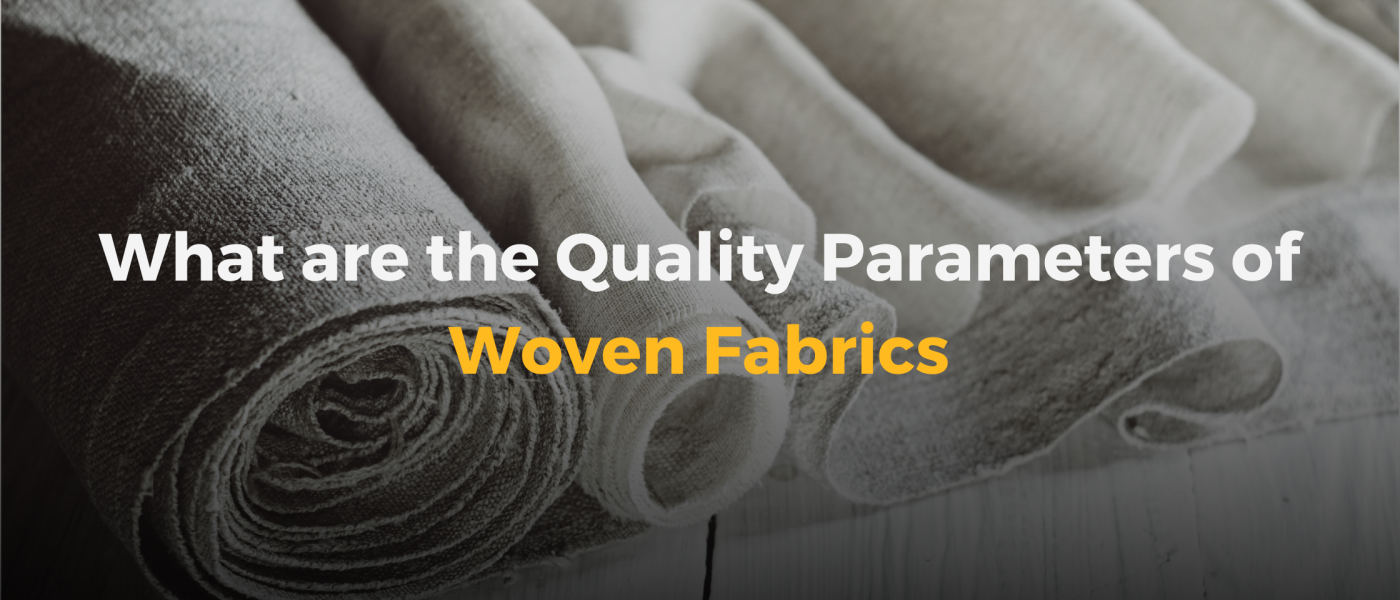As a woven fabric manufacturer, it’s vital for you to keep up with the latest standards for textile quality. This helps you create new fabrics and blends. There are endless possibilities for making unique fabrics, but not all options work on the production line. Sometimes, new blends aren’t approved because they don’t meet quality standards. Quality control measures help determine quality. They include industry norms, government rules, what consumers like, and the criteria set by textile manufacturers in India.
In this blog, we will discuss the quality parameters of woven fabrics.
What Are the Quality Parameters of Woven Fabric
Woven fabrics are the most popular and versatile fabrics of all types. They are created by interlacing two sets of yarn (warp and weft) at a right angle to each other. The type of yarn, the weave pattern used (twill, plain, or satin), thread spacing, raw material, and linear density can result in a wide variation of fabrics with different textures.
However, a standard quality parameter is established for each variation, which becomes one of the main factors in determining the progress and sustenance of the manufacturer. Before starting to weave, knowing the fabric parameters is necessary.
Objectives of Quality Control Parameters
The specifications provide all the necessary information to the woven fabric manufacturers, allowing them to define the following:
- Understand the production process of commercial woven structures
- Evaluate the quality of woven variables like polyester/cotton blend
- Observe the variations of parameters performance of the produced fabric
- Analyse the qualitative/quantitative influence of weaving through the data obtained
In addition, your buyers will have their own fabric quality control parameters that they will employ regardless of your process. So, whether you sell fabric online on TEXchange or traditionally through Damodar Menon International, maintaining high quality is essential for B2B success.
Tearing and Tensile Strength
Wear and tear and strength is two of the main quality control parameters used by textile manufacturers in India. The test measures the amount of force required to tear a woven fabric. This test determines a fabric’s strength and durability, whether it can be used daily or withstand mishandling. While strong and durable fabrics are valued, low-tensile strength fabrics have their advantages. Quality parameters play a crucial role in determining the worth of fabrics with different use cases.
EPI and PPI Calculation
EPI and PPI are used to calculate the yarn quantity of a fabric. EPI (End Per Inch) determines the quantity of warp yarn per inch of fabric, and PPI (Picks Per Inch) is the quantity of weft yarn per of fabric. EPI and PPI can be discovered using lab testing or manual testing methods.
Shrinkage Test
Before sending fabrics into production, the woven fabric manufacturers assess their shrinkage to ensure that they maintain their size and fit even after laundering. This test is especially important to guarantee that the garments won’t lose shape due to fabric shrinkage. The information will enable manufacturers to account for shrinkage during the pattern-making process accurately.
Elasticity and Recovery
Elasticity results from stretching a fabric to its maximum extent without causing deformation. Assessing the fabric’s elasticity percentage is crucial before commencing production to ensure its suitability for the intended application. Elasticity is quantified as a percentage per meter or inch of fabric. This measurement can be conducted in multiple directions: width-wise, length-wise, or along the fabric’s bias. Additionally, it can be evaluated across multiple dimensions simultaneously, acknowledging that the measurements may vary.
GSM Calculation
GSM, which stands for Gram per Square Meter, is a measure of a fabric’s weight. The GSM value varies depending on the type of yarn used and is directly related to the thickness of the fabric. For example, a heavyweight cotton fabric typically has a GSM value of over 250 and is commonly used for making upholstery, canvas bags, and denim. The denser arrangement of fibers in the fabric contributes to its greater thickness.
While these are the regular fabric quality parameters, many woven fabric manufacturers also measure abrasion resistance, bowling, crimp percentage, and piling to test the quality of the produced fabric.
To learn more about quality control and buy certified and tested wholesale fabric online, register on TEXchange Global, one of the leading textile trading platforms for B2B sales.




